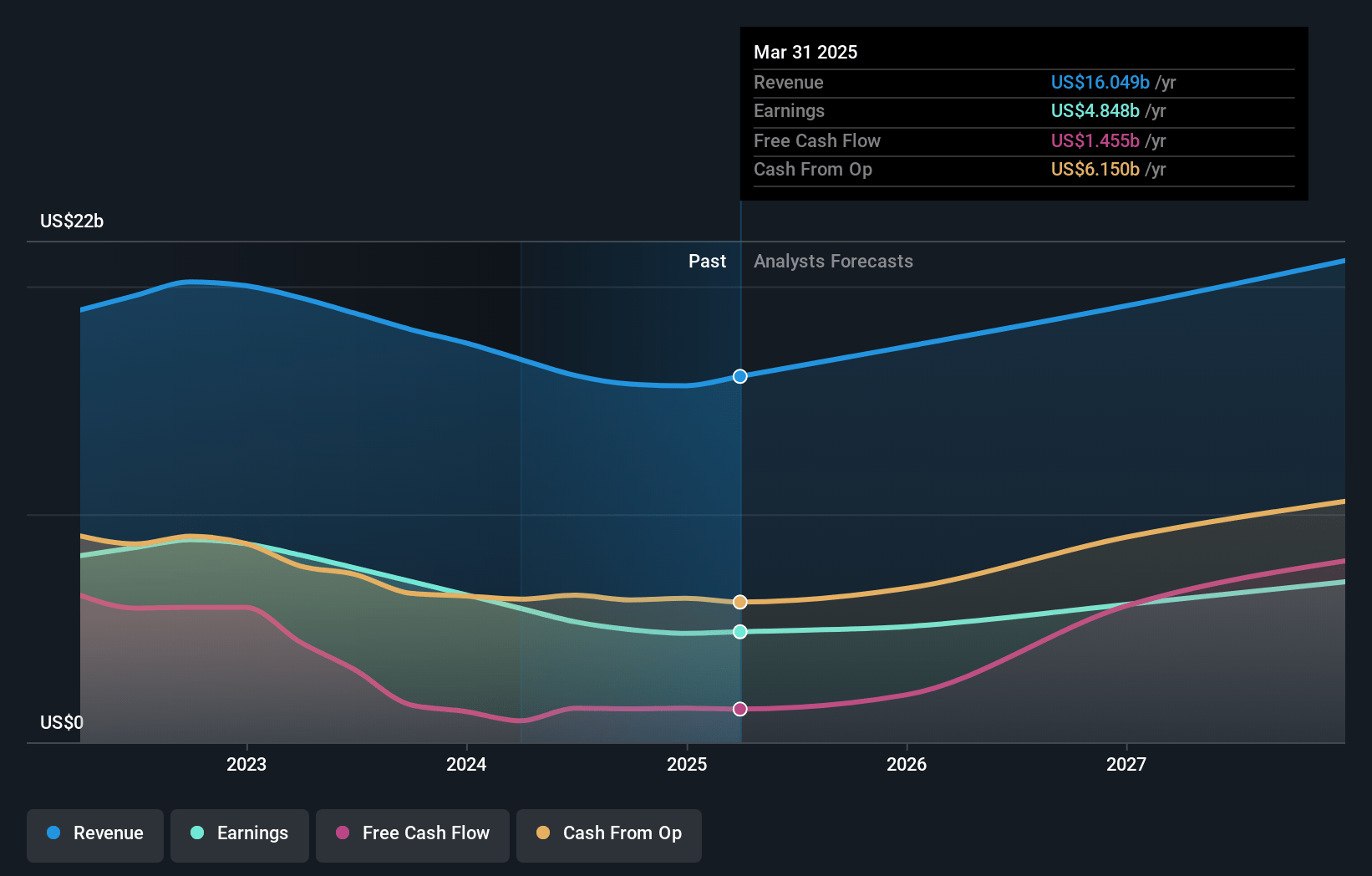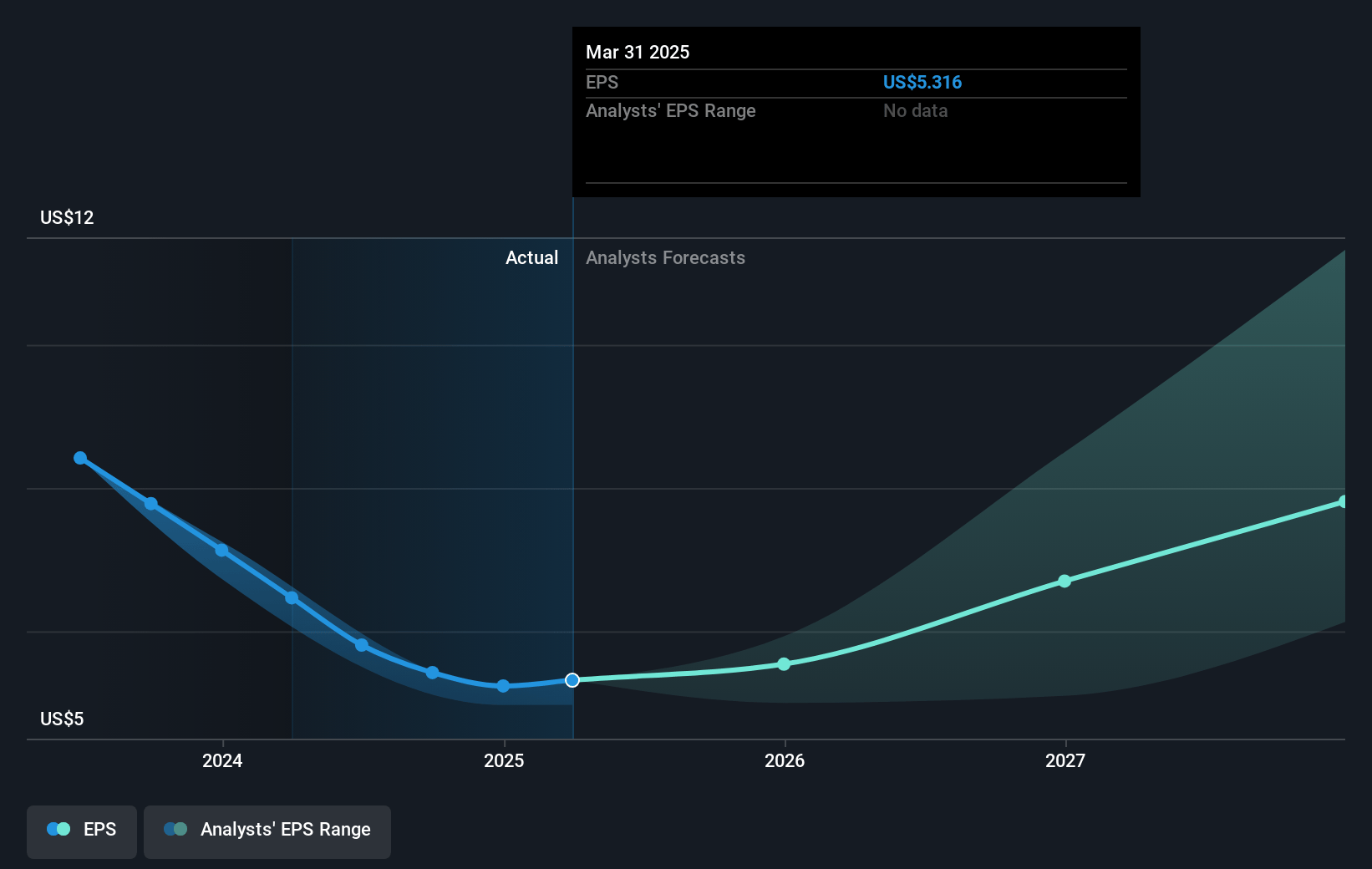Narratives are currently in beta
Key Takeaways
- Strong growth in the automotive market, especially in China, driven by EV demand, supports Texas Instruments' revenue growth potential.
- TI's disciplined capital management and strategic investments in manufacturing bolster earnings growth and long-term shareholder value.
- Texas Instruments faces challenges with declining revenue, particularly in its Analog and Embedded Processing segments, amid automotive market weaknesses and industrial downturns.
Catalysts
About Texas Instruments- Designs, manufactures, and sells semiconductors to electronics designers and manufacturers in the United States and internationally.
- The automotive market for Texas Instruments is experiencing strong growth, particularly in China, driven by increasing demand for EVs and TI's growing content in these vehicles. This momentum in automotive could contribute to revenue growth.
- Personal electronics, enterprise systems, and communication equipment markets are showing cyclical recovery with significant sequential growth rates, indicating potential for continued revenue improvement.
- TI's strong cash generation and disciplined capital management, highlighted by substantial free cash flow and regular dividend increases, provide a solid foundation for earnings growth and shareholder returns.
- TI's focus on strengthening its competitive advantages through manufacturing and technology investments, coupled with a broad product portfolio and diverse long-lived positions, is expected to support long-term free cash flow per share growth.
- The anticipated continuation of US-Chinese EV momentum and broader uptake of TI's technology in these markets could enhance gross margins as higher-margin segments gain prominence relative to TI's overall business.
Texas Instruments Future Earnings and Revenue Growth
Assumptions
How have these above catalysts been quantified?- Analysts are assuming Texas Instruments's revenue will grow by 10.6% annually over the next 3 years.
- Analysts assume that profit margins will increase from 31.4% today to 37.1% in 3 years time.
- Analysts expect earnings to reach $7.9 billion (and earnings per share of $8.72) by about December 2027, up from $4.9 billion today. However, there is a considerable amount of disagreement amongst the analysts with the most bullish expecting $8.7 billion in earnings, and the most bearish expecting $5.4 billion.
- In order for the above numbers to justify the analysts price target, the company would need to trade at a PE ratio of 30.3x on those 2027 earnings, down from 35.5x today. This future PE is greater than the current PE for the US Semiconductor industry at 30.0x.
- Analysts expect the number of shares outstanding to decline by 0.32% per year for the next 3 years.
- To value all of this in today's terms, we will use a discount rate of 8.19%, as per the Simply Wall St company report.
Texas Instruments Future Earnings Per Share Growth
Risks
What could happen that would invalidate this narrative?- Texas Instruments experienced a year-over-year revenue decline of 8% in Q3 2024, indicating potential challenges in maintaining revenue growth.
- The Analog and Embedded Processing segments reported significant year-over-year declines (4% and 27% respectively), which could impact the company's overall revenue and earnings.
- Automotive growth is primarily driven by China, but there is persistent weakness in other global automotive markets, which could affect revenue stability.
- Industrial market revenue is down over 30% from its peak, with continued inventory reductions, which may continue to pressure revenues.
- Gross margins are forecasted to decrease in the fourth quarter due to declining revenue and increased depreciation, impacting net margins and earnings.
Valuation
How have all the factors above been brought together to estimate a fair value?- The analysts have a consensus price target of $208.83 for Texas Instruments based on their expectations of its future earnings growth, profit margins and other risk factors. However, there is a degree of disagreement amongst analysts, with the most bullish reporting a price target of $298.0, and the most bearish reporting a price target of just $140.0.
- In order for you to agree with the analyst's consensus, you'd need to believe that by 2027, revenues will be $21.2 billion, earnings will come to $7.9 billion, and it would be trading on a PE ratio of 30.3x, assuming you use a discount rate of 8.2%.
- Given the current share price of $192.44, the analyst's price target of $208.83 is 7.8% higher. The relatively low difference between the current share price and the analyst consensus price target indicates that they believe on average, the company is fairly priced.
- We always encourage you to reach your own conclusions though. So sense check these analyst numbers against your own assumptions and expectations based on your understanding of the business and what you believe is probable.
How well do narratives help inform your perspective?
Disclaimer
Warren A.I. is a tool utilizing a Large Language Model (LLM) that ingests data on consensus price targets, forecasted revenue and earnings figures, as well as the transcripts of earnings calls to produce qualitative analysis. The narratives produced by Warren A.I. are general in nature and are based solely on analyst data and publicly-available material published by the respective companies. These scenarios are not indicative of the company's future performance and are exploratory in nature. Simply Wall St has no position in the company(s) mentioned. The price targets and estimates used are consensus data, and do not constitute a recommendation to buy or sell any stock, and they do not take account of your objectives, or your financial situation. Note that Warren A.I.'s analysis may not factor in the latest price-sensitive company announcements or qualitative material.
Read more narratives
There are no other narratives for this company.
View all narratives



